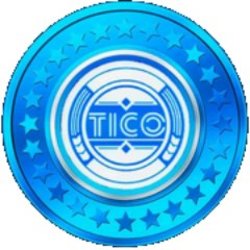USDC and USDT are two of the most common stablecoins in the world right now. Both coins are also two of the top five largest cryptocurrencies by market capitalization and, as such, are important pillars of the crypto economy.
The interesting thing about both coins is that they exist for the same reason and are similar in many ways. Both are stablecoins pegged to the dollar and used as a way to use dollars on the blockchain.
However, despite their similarities, USDT and USDC have a lot of differences. If you’re trying to pick between one or the other, this is the right article for you.
Stablecoins
As their names suggest, stablecoins are coins that are supposed to be stable.
As innovation ran through the crypto ecosystem, people began to notice an important problem. While the ecosystem was constantly rising, prices were never stable, and crashes were often brutal.
During bear markets, coins could lose up to 50% of their value in weeks. This meant that cryptos weren’t a stable source of value that could be used to complete transactions that needed that stability.
The solution to this problem was stablecoins. Stablecoins were created to always have the same value regardless of the market’s fluctuations. These coins were created as assets pegged to other commodities, fiat, or algorithms.
For example, an algorithmic stablecoin would maintain its stability via complex algorithms or contracts on the blockchain, while other stablecoins would maintain their stability via direct means. That is, a unit of the fiat would be available and readily exchangeable for every unit of the stablecoin token.
Today, the most popular stablecoins are pegged to the United States Dollar. They are USDT and USDC.
USDT
USDT is the most popular stablecoin in the world, and it also has the highest market capitalization of any stablecoin. Asides from that, the coin is the third largest cryptocurrency according to market capitalization, behind only Bitcoin and Ethereum.
That shows how much people trust the project and use it to complete transactions on exchanges. Tether was one of the first stablecoins ever made and was launched way back in 2014 by Tether Limited Incorporated. The coin was initially named Realcoin, but it soon adopted the name Tether.
Tether Limited Inc. is owned by iFinex, which is the company that owns the Bitfinex exchange. Tether was initially released on the Bitcoin chain, but in time has now expanded to over ten protocols and blockchains.
In May of 2022, USDT became the third-largest cryptocurrency by market capitalization and has held that position ever since. That’s an important feat, considering it has remained steady in defiance of a tough crypto winter.
USDC
USDC là stablecoin phổ biến thứ hai và có vốn hóa thị trường cao thứ hai của bất kỳ stablecoin nào. Đây cũng là stablecoin lớn thứ tư theo vốn hóa thị trường, chỉ sau Bitcoin, Ethereum và USDT.
Không giống như USDT, được phát hành vào năm 2014, USDC là một đồng xu mới hơn và chỉ ra thị trường bốn năm sau đó. Đồng xu hiện nay được quản lý bởi một tập đoàn có tên là Center, mà Circle và Coinbase thành lập.
Ngay bây giờ, USDC chủ yếu có sẵn dưới dạng mã thông báo ERC-20. Nó cũng có thể được sử dụng trên các chuỗi như Hedera Hashgraph, Algorand, Avalanche, Solana, Stellar, và TRON.
Vào tháng 3 năm 2021, USDC đã đạt được một cột mốc quan trọng khi Visa cho biết sẽ cho phép USDC thanh toán hóa đơn trên mạng lưới của mình. Tính đến tháng 7 năm 2022, Circle tuyên bố mạng đã in được hơn 55 tỷ USDC. Điều đó có nghĩa là tập đoàn phải có một dự trữ tiền mặt ít nhất 55 tỷ USDC, hoặc gần như vậy.
USDT so với USDC
The important metrics that stablecoins can be compared are stability (i.e, safety), blockchain circulation, transaction fees, and use cases.
Stability
The core idea behind stablecoins in the first place is stability. Coins that cannot maintain their stability are essentially frauds and could destroy a lot of projects. When TerraUSD, an algorithmic stablecoin, depegged from the dollar, it took a lot of DeFi projects to the grave with it.
At the time, Luna wasn’t even the biggest stablecoin in the world. That’s why the stability of these stablecoins must be evaluated before they grow even further.
Throughout the fluctuations of the crypto winter, USDT has managed to maintain its peg with the US dollar. The coin hardly ever depegs, and even when it does, it’s usually for a very short while. While this doesn’t guarantee that USDT will never depeg, it means that one can have reasonable trust in the coin’s ability to remain stable.
Like USDT, USDC is also remarkably stable. The coin hardly ever depegs, and when it does, the difference is usually below a cent. Like USDT, this doesn’t guarantee future stability— however, it means one can have relative faith in the coin.
Interestingly, despite being the less popular stablecoin, USDC has more transparent reserves than USDT. Grant Thornton, one of the biggest accounting firms in the world, issues monthly attestations that back the USDC reserves.
However, one should note that these attestations aren’t audits. An attestation is a method used to evaluate how true or correct data or information is compared to its stated purpose. On the other hand, an audit is a whole new process used to discover data risks or compliance issues that may not have been obvious before the audit.
While one could hope for an audit of USDC and its reserves, an attestation is better than nothing.
USDT doesn’t have attestations from a top-five accounting firm like USDC, although the stablecoin has proven to be very stable in practice. During a FUD (fear, uncertainty, and doubt) frenzy, 7 billion USDT was withdrawn by users from its reserves. This represented around 10% of the coin’s total reserves and worked seamlessly.
In less than a month, USDT also processed 16 billion dollars in withdrawals, representing 19% of the coin’s total reserves. Despite this, the coin didn’t depeg.
6/
But as we always said, Tether had/has in fact >= 100% of the backing, never failed a redemption and all USDt are redeemed at 1$.
In 48 hours Tether processed 7B in redemptions, averaging 10% of our total assets, something almost impossible even for banking institutions.— Paolo Ardoino 🍐 (@paoloardoino) June 27, 2022
function lazyTwitter(){var i=function(t){if(!t)return;var n=t.getBoundingClientRect();return 2500>n.top||-2500>n.top};if(!i(document.querySelector(“.twitter-tweet”)))return;var s=document.createElement(“script”);s.onload=function(){};s.src=”//platform.twitter.com/widgets.js”;document.head.appendChild(s);document.removeEventListener(“scroll”,lazyTwitter);document.removeEventListener(“touchstart”,lazyTwitter);console.log(“load twitter widget”)}document.addEventListener(“scroll”,lazyTwitter);document.addEventListener(“touchstart”,lazyTwitter);lazyTwitter()
While this doesn’t guarantee that USDT holds 100% of all deposits in dollars, it’s clear that the coin is safe. As Ardoino argued in his tweet, even some banks may not be able to process that much money in withdrawals at such short notice.
Blockchain Circulation
Due to being on the market for longer, USDT presently has a wider presence on blockchains than USDC.
USDC natively lives on eight blockchains. This includes Ethereum, Solana, Avalanche, TRON, Algorand, Stellar, Flow, and Hedera. USDT, on the other hand, is hosted on 11 blockchains. These chains include Omni Layer blockchain, Ethereum, Tron, EOS, Liquid, Algorand, Solana, Bitcoin Cash (SLP), Kusama, Avalanche, and Polygon.
If you choose a stablecoin based on its reach, then USDT is the one you should be going for.
Transaction/Gas Fees
USDC or USDT doesn’t determine the transaction fees for completing interactions on an exchange or a blockchain. Instead, they are determined by that exchange or that blockchain. Hence, there’s no material difference between USDT and USDC in terms of fees.
Use Cases
USDT and USDC have roughly the same use cases and can be used for the same purposes.
However, USDC seems to have the edge regarding this, as Visa has started settling transactions with crypto partners in USDC. USDT doesn’t have that sort of institutional acceptance yet.
Trên Flipside
- Mặc dù không có bằng chứng cho thấy các stablecoins fiat không ổn định, việc thiếu kiểm toán 360 độ của cả dự trữ USDC và USDT khiến họ nghi ngờ. Do đó, không có gì đảm bảo rằng những đồng tiền này sẽ không bị sê rầy trong tương lai.
Tại sao bạn nên quan tâm
USDT and USDC aren’t merely important stablecoins. They are also two of the most important cryptocurrencies in the crypto ecosystem. They are critical assets when it comes to crypto, and chances are you’ll one day have to choose between them. That’s why it’s important to understand what they are and how they differ.



























